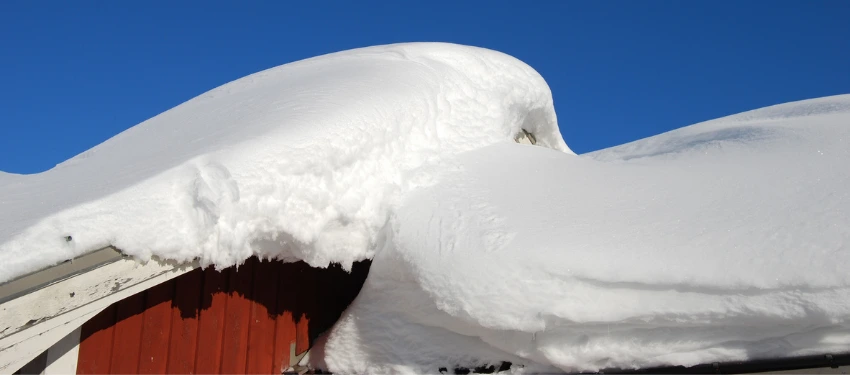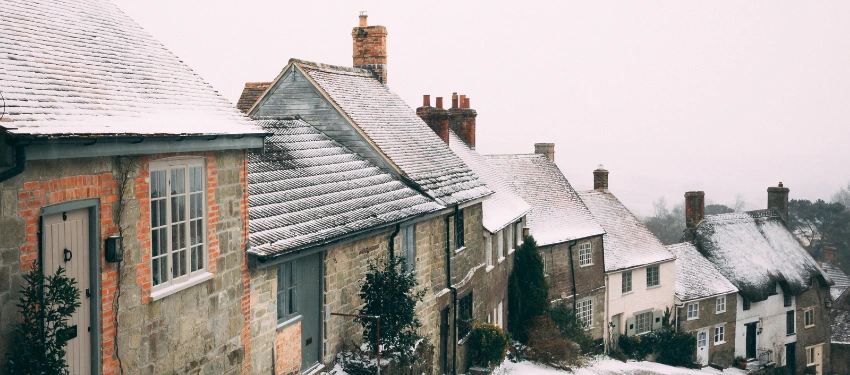Many people love the winter season. The cool weather, the snowy backdrop, and the activities that come with it. Though depending on what state you are in, every winter could be different. It could be the extremes — from mild weather down to harsh ones that bring in snowstorms and ice. Though a beautiful season, winter also comes with different issues especially with its unpredictability. Probably a lot of people are more worried when it comes to winter safety, like navigating on the slippery roads or the extra effort and time that it will take to shovel down their driveway. Their house is not the main concern for many. What they don’t realize is that no matter what type of winter we have, this season could be really tough on our houses, both in the interior and the exterior.
Our homes are literally our safe place during the winter. It protects us from the elements, but many people’s houses are not actually “winter-ready”. Our focus in this article is specifically on the roofing of our homes. You could say that the roof is the first line of defense against natural elements, especially bad or extreme weather conditions. But what most don’t realize is that this part of the house is vulnerable to the elements, especially with the season bringing in strong winds, snow, ice, and low temperature. Being able to identify common roofing issues is important, to prevent potential issues. The most common problems that your roof may encounter in the winter season are flashing leaks, condensation, ice dams, tree limbs, icicles, strong winds, rodents, and excessive snow loads.
Here are the most common roofing problems during winter:
Flashing leaks
You can find the flashing in the corners, ridges, and front edge of your room and also around the skylight and the chimney. These metal strips are a usual feature especially if you have a sloped roof. Professionals recommend installing flashing for additional protection to your house, as it seals the joints of the roof so that no moisture can come in. It is supposed to act as a leak-proof barrier and an added support for the integrity of your roof, while at the same time it allows the roof to expand or contract even with temperature fluctuation or humidity being present.
So, when does the problem start?
- Cracks in the flashing – leak usually happens when there are cracks in the flashing. If the metal flashing in your house is exposed, usual wear and tear will happen due to the wind, rain, and other elements. This will weaken the flashing, leading it to crack.
- Missing flashing – this is why it is important to have a regular inspection of your roof to address this type of issue immediately. A missing flashing means access to moisture, and without the flashing being in place, your roof (or other areas it is meant to protect like chimneys, windows, etc.) will show signs of damage. Molds and rots could also be observed.
- Bent flashing – this should not be treated as a minor issue on your roof. A bent flashing will cause bigger damage in the long run, as your flashing will eventually corrode and break down.
When your flashing is compromised, severe water damage could follow. Improper installation and lack of proper maintenance especially in older roofs are the culprits for this.
Pro Tip: Set a schedule for regular roof inspection and maintenance. It should be done before the winter season. Not only is it safer but repairs/installation will also be easier.
Condensation
The science of condensation – warm air meets a cold surface. So how does this phenomenon happen on your roof? If your attic is not properly insulated or if there is inadequate ventilation, condensation will happen as the warm interior air meets the cold underside of the roof, which is exposed to the winter temperature. Mold and mildew will result and will damage your roof. In addition, a musty smell also follows.
Pro tip: Make sure that your attic is well-ventilated and has proper insulation
Ice dams

This happens when the upper area of your icy roof starts to thaw, but the lower portion remains frozen. As the water flows down, it will eventually re-freeze on the lower section and the gutter system, forming an ice dam. This solid ice will then prevent melted snow to drain away, and with nowhere to drain, the melted snow will leak right into the roof, the attic, and even eventually into the living space.
Aside from leaks, ice dams can be heavy, causing damage to the gutter, and can even be a safety hazard in case there are people below.
How could you prevent ice dams? If your gutters are clogged, there is a high probability that you will experience this with your roof. So clean your gutters! Also, it is important to increase the insulation and make sure that your roof is well-ventilated to stop the upper portion of your roof from getting too warm.
Pro tip: In case of heavy snowfall, use a long-handled roof rake to remove the snow, as ice dams could appear quickly with snow’s insulating properties.
If there is too much ice dam build-up, don’t attempt to climb a ladder to chip off the ice. Call in the professionals as they have the equipment to do the job. This is also for your safety.
Tree limbs

Yes, having trees in your surrounding is a good addition to your house’s scenery. But you have to be privy to the dangers that come along with it. If tree limbs touch your roof, it could scrape the surface of your roof, damaging the protective layer. Heavy storms could also break the branches, and it could end up in your roof (if heavy, it could even pierce through). Critters could also gain access to your roof through the branches.
Quick fix: Prevention is the key to avoiding any damages caused by tree limbs. Just simply trim your trees during the autumn and summer seasons.
Icicles

Icicles happen when the water from the melted snow flows the roof and drip from the gutters. If the temperature is cold enough, it could freeze the melted snow as it goes down. Though the glistening icicles may look fascinating, it is a safety threat overhead. It could also cause strain to the sides of your roof, gutters, and shingles.
Tip: Prevent icicles from forming by making sure that you have proper attic insulation. Also, make sure that your flashing has no issues and the gutters are clean to prevent significant damages from the icicles.
Strong winds
Depending on your region, strong winter winds could bring damage to your roof as well as other parts of your house. A strong wind could loosen your asphalt shingles and could also lead to clogged gutters. In effect, a clogged gutter could cause water to leak into the insides of your home.
Tip: If you notice any part of your roof especially the shingles have been knocked to the ground, make sure to have them checked professionally to avoid bigger damages. Good maintenance is also the key to ensuring that your roofing can withstand strong winds.
Rodents/Critters
Rats, squirrels, raccoons, birds, and the likes only need a small gap in any area of your roof to gain access and make themselves comfortable at your home. These critters are generally looking for a warm place where they could nest and your attic space is the best place for them. If you think that a small hole or gap is “okay”, rest assured that these critters could gnaw themselves in.
Damages caused by these animals, like holes in your roof, should not be taken lightly especially as the weather turns colder.
Tip: Regular inspection is the key and sealing all possible entry points. This is of course best done before the winter comes.
Excessive snow loads

An average roof can handle about 20 pounds of snow per square inch. If heavier than its load capacity, the roof can exhibit signs of damage such as sagging ceiling, crack on ceiling drywall, and issue in closing doors.
Tip: Use a snow rake to clear off areas that you can easily access. Call for professional help if needed for safety and so that proper equipment could also be used.
The key takeaway that Same Day Pros want to impart is that majority of common roofing issues could be avoided if homeowners take the time to regularly schedule a roof inspection and clean-ups. Hopefully, by knowing the issues, causes and risks involved related to winter roofing problems, preventive measures could be put in place (note that this should be done before the winter season begins.)
Roofing work, in general, is dangerous and the winter weather will add to the risk. This is why we recommend that you contact a professional roofer to address common winter roof issues like the ones listed above. In addition, as soon as you spot any problems with your roof or other parts of your house, it is best to address them immediately.


